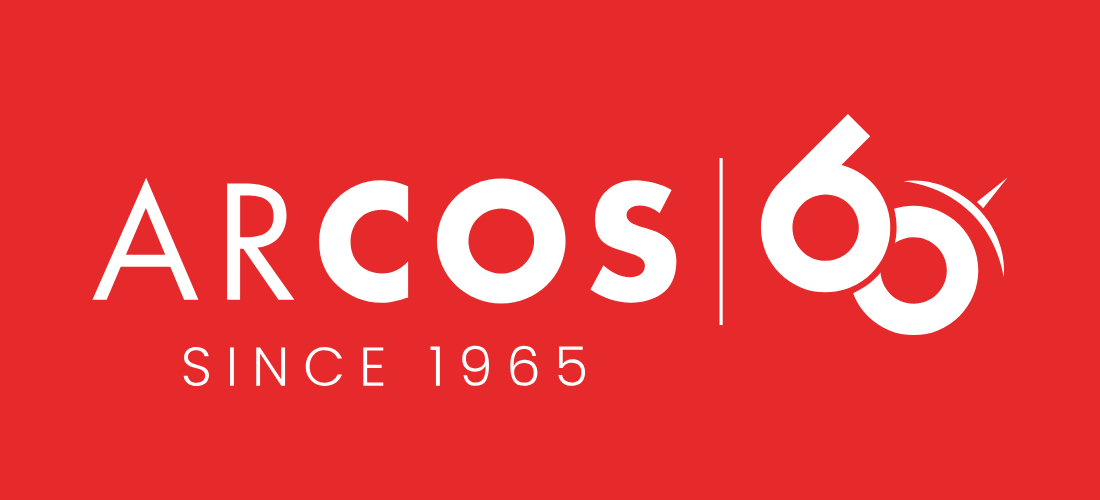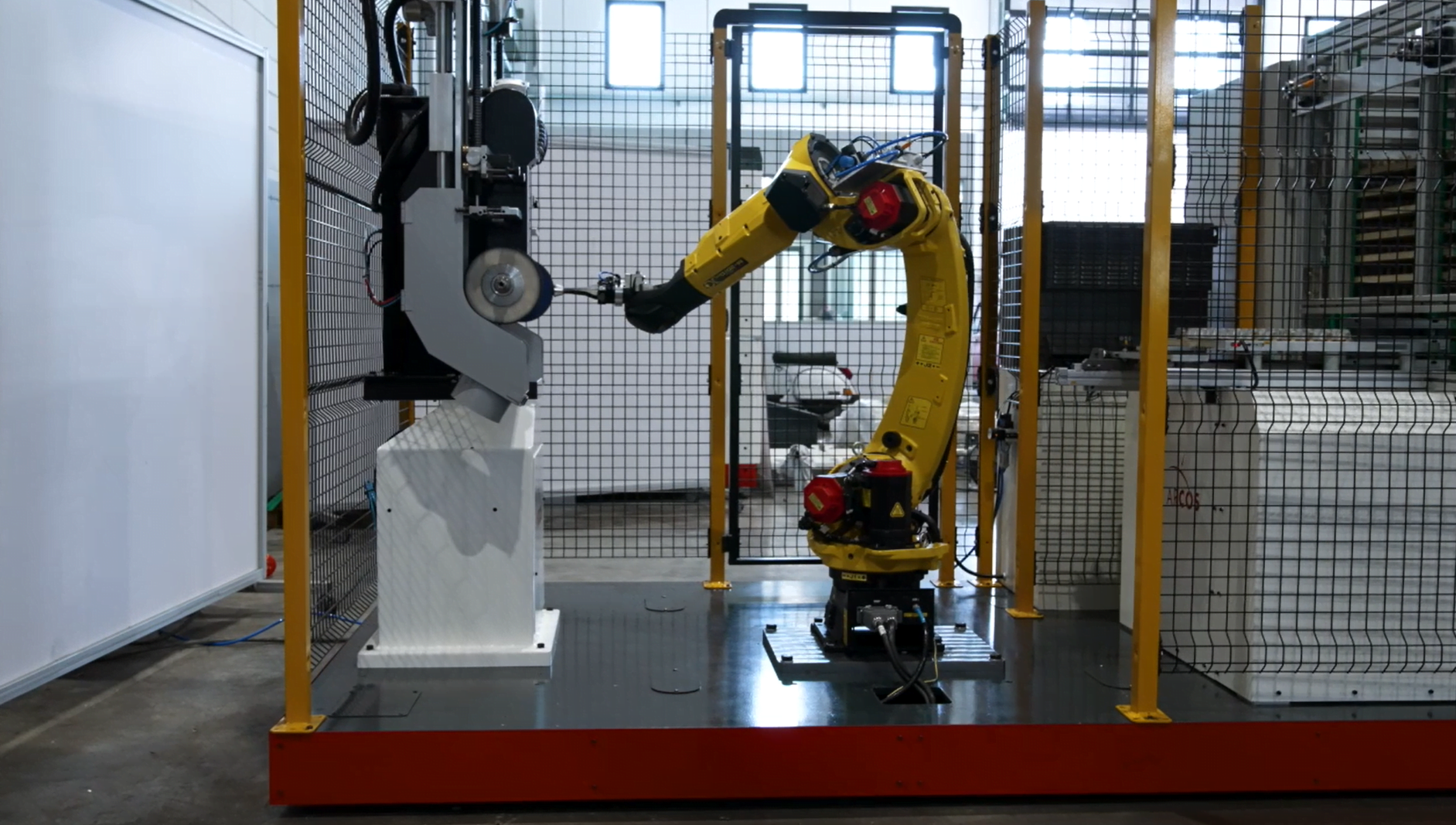The surface finishing process of objects of various geometry and material can now be carried out with unparalleled optimization thanks to the use of robotic systems. The advantages of robotic polishing are now clear and time-tested to those in the sector, but the changes in recent years have required more attention to the consumption of raw materials used, the energy consumption required and the total processing cycle time.
In this sense, Arcos is at the forefront to guarantee the robotic solution best suited to each reality, with highly personalized professional advice on the process to be followed. Find out how it works through a completed case study for an important perfume brand.
Table of Contents
Reduce costs thanks to process optimization
The increase in the prices of raw materials and the weight that energy consumption has taken on within companies has required greater attention to the type of process that is implemented for the finishing of surfaces.
To respond to this fundamental need, Arcos provides targeted advice for the type of process necessary for its reality. Process specialists are made available who, through various steps, identify for each specific piece and material what to use and how to best work the element. The customer provides the main information on the product to be processed – in some cases, even how the polishing was carried out manually – and on the basis of this the most suitable robotic polishing process is studied through various tests. After all the necessary assessments, the company is provided with an extremely effective manufacturing process capable of reducing cycle time by 40% thanks to a measured and conscious choice of work tools – wheels and paste.
The advantages of consulting for tailor-made robotic polishing
This detailed attention to each element useful for polishing allows significant advantages:
- The cycle time is reduced;
- Increase production;
- The consumption of abrasives (paste and wheels) is reduced;
- Energy consumption is limited (electricity, compressed air, etc.).
Every company has to deal with energy and material consumption, which is why Arcos tries to optimize every aspect of the process. In terms of energy, for example, robotic systems are designed with a reduction in electricity consumption and with a focus on the cost of the compressed air used by the machine. As for the materials, however, from 2020 there has been a cost increase from 15 to 20% for pastes and abrasives: the choice of consumables is therefore fundamental and multiple tests are carried out to find the most advantageous solution.
These process evisceration tests allow you to provide the most optimal model for each reality, with specific advice on which materials to use. In this way Arcos confirms itself not only as a supplier, but a competent consultant guided by a long experience in the field. Companies that invest in robotic polishing reap considerable savings over time: this is what a reality in the fashion sector has done for the polishing of aluminum details.
Case Study: polishing of fashion & luxury details
The company turned to Arcos for the polishing of caps intended for the closure of luxury perfumes.
The most important characteristics to take into consideration to offer the best robotic solution were the material and geometry of the pieces.
The material
The material in question is zamak, an aluminum alloy, therefore a very sensitive material: in order not to overheat and deform the piece during processing, it was essential to find the right compromise. To offer the most suitable polishing, the following are decisive: the speed of the brush, the type of paste, the processing times.
Why is the automatic system significantly more advantageous than manual processing? In the manual process, the operator works the piece under a wheel at a fixed speed and, after a few minutes, perceives its overheating. This forces the operator to stop the operation to cool it, then resume the process and alternate polishing phases with cooling phases: inevitably the working times are extended. Thanks to robotic polishing, on the other hand, it is possible to adjust the speed of the wheel together with that of the paste, considerably reducing the process time for optimal processing of the piece. In this case the cycle time was reduced by 30% thanks to a working duration of the system of 9 uninterrupted hours.
The geometry
The star geometry of the caps had particular grooves to be machined and therefore difficult to polish effectively. To avoid manually setting the path to follow within the program on the computer, an extremely simple solution was found. The operator programmed the circumference formula by setting the coordinates of the center of the star with the radius between the crest and the peak. By inserting this basic geometric function into the robot, it was possible to proceed with the polishing of each point through compensation: the same work force is exerted on the entire surface and the contact wheel enters the grooves when it doesn’t perceive the thrust of the object. In this way, all the geometry of the star is followed for a complete and flawless polishing.
The components of an economic system
The system studied is also extremely economical: it is composed of a 25 kg robot, a high autonomy loading system and a unit with two cleaning heads with a single motor. This last detail allows you to proceed without the presence of two independent units, optimizing working spaces and times. One cleaning head is in classic cotton, while one is in ventilated royale blue cotton to dip the pieces into the whell – the head fans out and reaches particular points of the geometry of the pieces, polishing the entire surface.
As can be seen from the video, the fixture equipment was supplied in wood for two main reasons:
- the wood does not risk contaminating, it is a pure material that avoids friction and does not scratch the pieces.
- wood absorbs heat: pieces arrive hot from polishing and wood reduces their temperature.
The compound feeder pushes the 80cm dough on the wheel in such a way as to correctly dose the dough into the polishing wheel: it adjusts the cadence and quantity, for a perfect result.
The loader used allows you to proceed on 25 rows for 50 pieces per pallet: 1000 pieces of capacity are guaranteed with 9 hours of continuous work without the need for the operator, thanks to the considerable autonomy of the system.
Conclusions
The increase in costs in recent years requires companies to pay more attention to every detail in the polishing process of their pieces. The robotic polishing allows to considerably optimize the working times and to use the most suitable tools according to the present needs. Depending on the applications, Arcos allows you to optimize the process by finding the most suitable materials and the cheapest technology. In this way, it is confirmed not only as an integrator of robotic systems, but a winning support in the process with historical experience.
Do you want to find the best process solution for the polishing of your pieces? Contact us: our team will advise you on the most suitable system.


